Ho Chi Minh City, 11:30 am April 10, The Anh finished work, hurriedly ordered lunch boxes, and moved with four colleagues to the Ba Son bridge for a lunch break.
They brought cardboard boxes to spread on the ground, set out rice, and ate together. After 30 minutes, he put on his headphones and surfed social media while his colleagues laid out tarps to lie down and take a nap.
For the past three weeks, this underpass has become a savior for workers like The Anh during the peak heat wave in Ho Chi Minh City.
They were employees of the Metro project 300 meters away. Previously, the workers ate and rested in a converted container room at the construction site. The project was almost finished, but the electricity in the area was cut off, making it impossible to charge phones or plug in fans. Every noon, the hot air blowing from above and outside turned the container into an "oven", forcing everyone to flee.
"It's spacious here, next to the river so the wind blows very cool, making it an ideal place to escape the heat for two hours at noon," said The Anh.
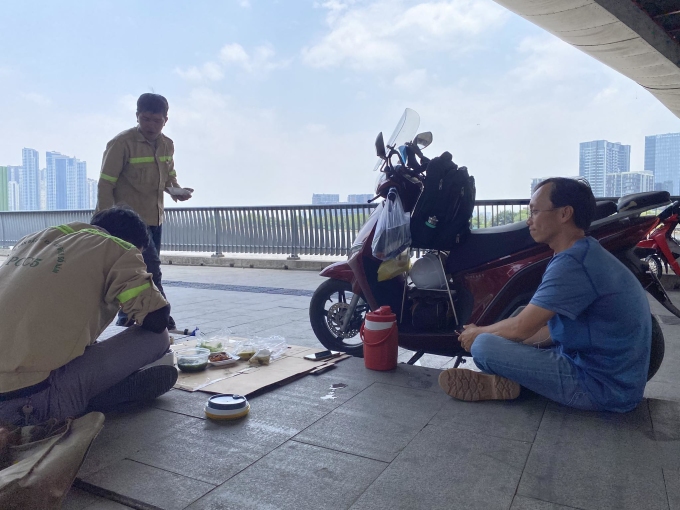
Mr. The Anh (in blue shirt) rests with colleagues at the foot of Ba Son bridge, District 1, Ho Chi Minh City. Photo: Ngoc Ngan
Ba Son Bridge connects District 1 and Thu Duc City, has three branches, so the wide, airy area under the bridge is a resting place for dozens of people, mainly workers, delivery people, technology car drivers, lottery ticket sellers, and scrap collectors to escape the heat. At noon on April 10, the temperature reached 40 degrees Celsius, some people brought hammocks to hang on the railings along the riverbank, and spread out tarps to lie down.
According to a survey by VnExpress , the number of people flocking to the under-bridge areas in the city such as Ba Son (District 1) and Thu Thiem (Thu Duc City) has increased dramatically in recent weeks. For nearly two months, the Southeast provinces have experienced a widespread heat wave. In Ho Chi Minh City, the highest temperature is 35-36 degrees Celsius, and the humidity is low at 30-40%. The hot weather during the day lasts from 12:00 to 16:00. However, the actual recorded temperature outside is 2 to 4 degrees higher than the forecast.
Mr. Le Dinh Quyet, head of the meteorological forecasting department of the Southern Hydrometeorological Station, said that this year, severe heat waves came earlier and more widely due to the influence of El Nino. Many hydrometeorological stations around the world have forecast that temperatures in the first four months of this year will be 0.7-1.5 degrees Celsius higher than the average of the past 10 years.
According to regulations, the highest air temperature of the day above 37 degrees Celsius is called hot weather. The level of 37-39 degrees Celsius is called severe heat and above 39 degrees Celsius is called especially severe heat.
In large cities like Ho Chi Minh City, the level of heat will vary. Central areas often have higher temperatures due to the heat resonance from concrete buildings, corrugated iron roofs, heat from production facilities, restaurants, kitchens, asphalt roads, concrete roads and reflection from buildings with many glasses. Places with lots of trees, near rivers and lakes often have lower temperatures, becoming shelters for people.
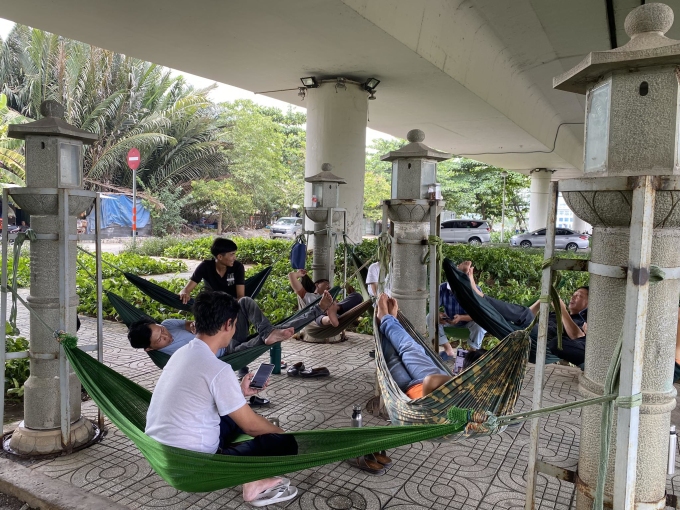
A group of drivers take a lunch break to avoid the heat under Thu Thiem Bridge, Thu Duc City, at noon on April 10. Photo: Ngoc Ngan
For about two weeks now, Mr. Thanh Tung, 37 years old, a technology taxi driver, has been "closing the app" earlier than usual to go under Thu Thiem Bridge, Thu Duc City to grab a "nice spot" to rest at noon and avoid the heat.
"Anyone who comes later will have to go to another area if there is no more room to hang their hammock," he said. "The area has a lot of trees so it's cool, and it's near the river so it's airy, suitable for avoiding the sweltering heat."
Tung has 6 friends who are all drivers and know each other from taking a nap in the same area under the bridge. They make an appointment to order lunch and bring hammocks to hang on the stone pillars to take a nap.
He said this is an ideal place because it is much cheaper than going to a coffee shop, which costs about 30,000 - 40,000 VND each time. Every day, Tung earns about 250,000 VND by driving a car. He saves money by bringing a thermos of ice water and taking a nap under a bridge.
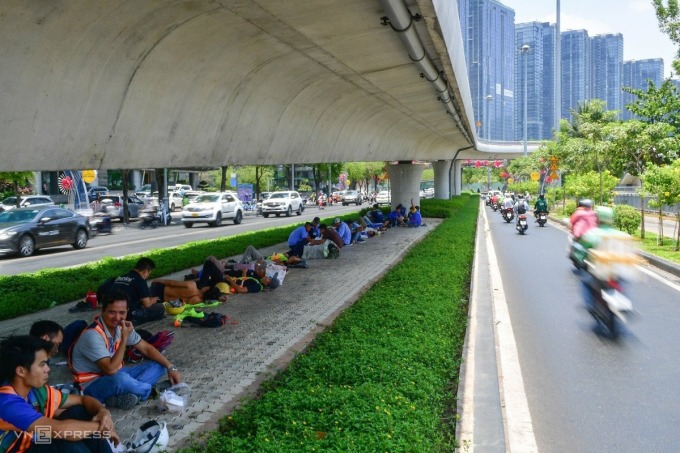
During lunch break, dozens of workers eat and sleep under Ba Son Bridge, on Ton Duc Thang Street, District 1. Photo: Quynh Tran
Van Tung and his wife, 35 years old, had a similar reason. At noon on April 10, he and his wife picked up their two children from school in Binh Thanh district and then the whole family went together under Ba Son bridge.
They are self-employed traders, renting a house in Binh Duong . Every day, Tung's wife wakes up early to cook rice, packs food, puts it on the motorbike, travels 30 km to take the children to school and then goes to work. At around 11:15, he takes the family under the bridge, spreads out raincoats to eat.
Tung said they used to have a shop at Kim Bien market, District 5, but it closed due to poor sales. For nearly a year and a half, due to economic difficulties and tight financial conditions, he chose to take a nap under Ba Son bridge.
"Convenient and economical," he explained. "After eating, we clean up. Everyone here is polite, quiet, clean, and secure, so nothing is stolen." Around 1 p.m., people taking a lunch break in this area will disperse and continue working.
Meanwhile, Tung's wife was serving rice to her son, tying her daughter's hair, and urging them to eat quickly.
"Take a nap so you won't be sleepy in class in the afternoon," she said.
Ngoc Ngan
Source



![[Photo] General Secretary To Lam attends the 80th Anniversary of the Cultural Sector's Traditional Day](https://vstatic.vietnam.vn/vietnam/resource/IMAGE/2025/8/23/7a88e6b58502490aa153adf8f0eec2b2)

![[Photo] Prime Minister Pham Minh Chinh chairs the meeting of the Government Party Committee Standing Committee](https://vstatic.vietnam.vn/vietnam/resource/IMAGE/2025/8/23/8e94aa3d26424d1ab1528c3e4bbacc45)



















































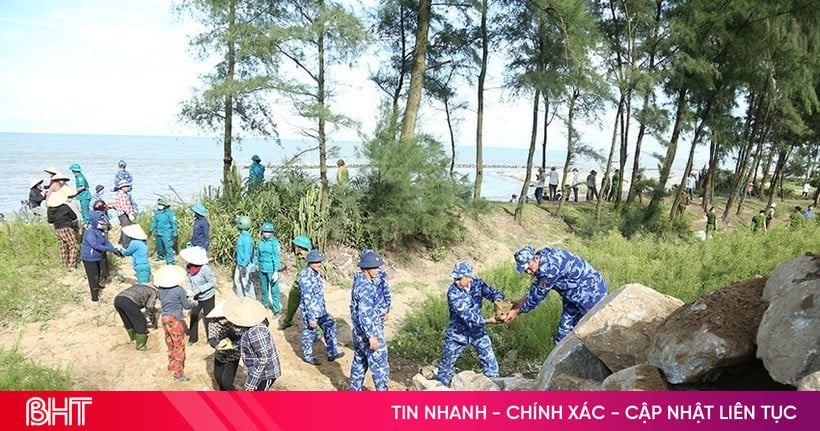






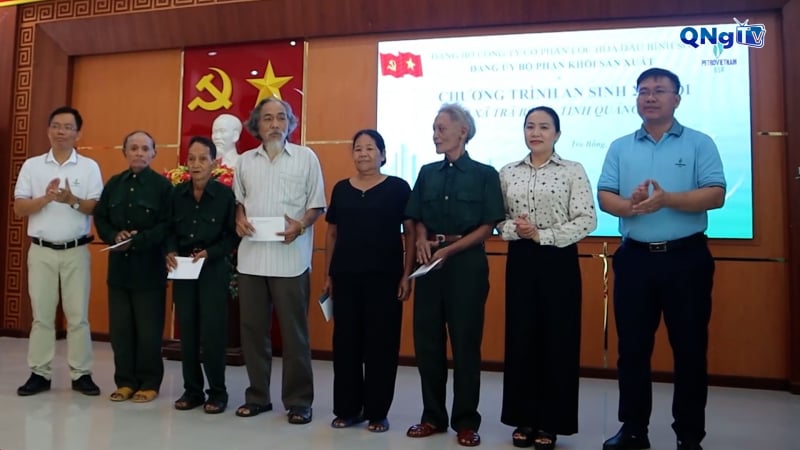

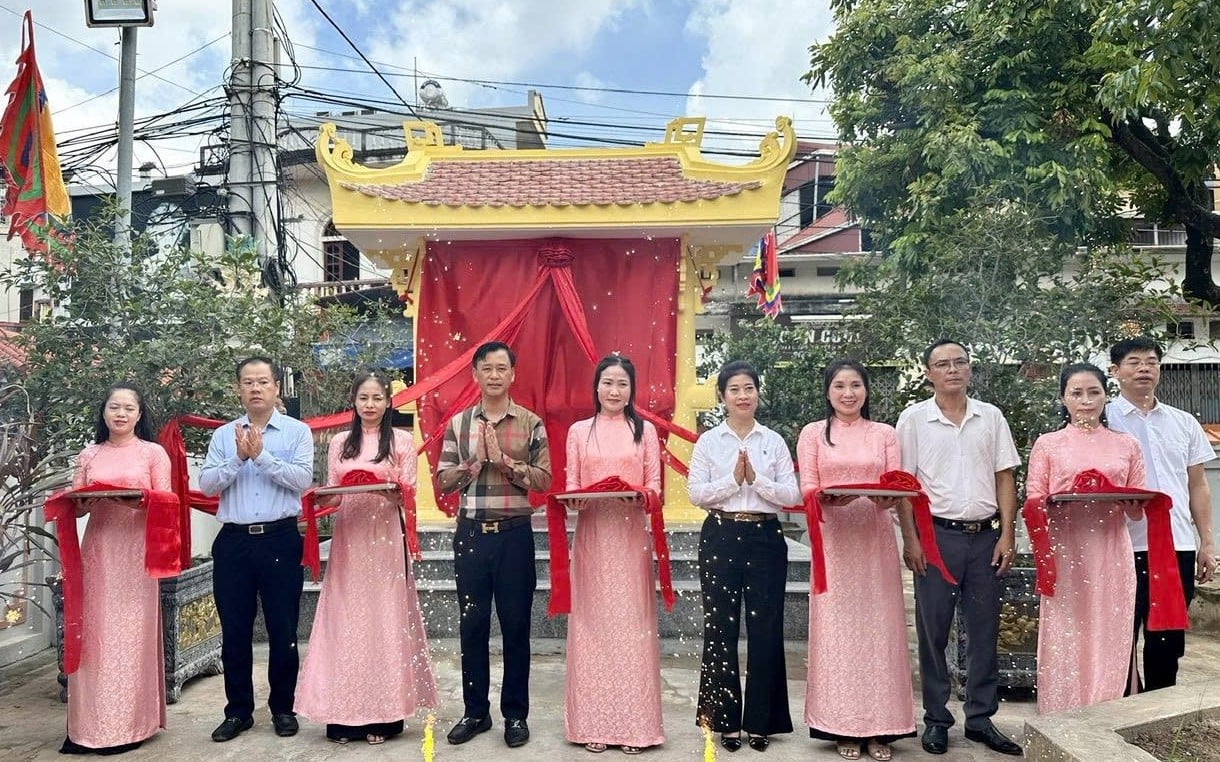















Comment (0)